Index
The case’s innards are physically split in two parts. The upper part will take a plethora of form factors, namely Micro-ATX, ATX, e-ATX, XL-ATX, SSI CEB and SSI EEB. The CPU backplate cutout is huge, which means that replacing CPU coolers will be a breeze as well.
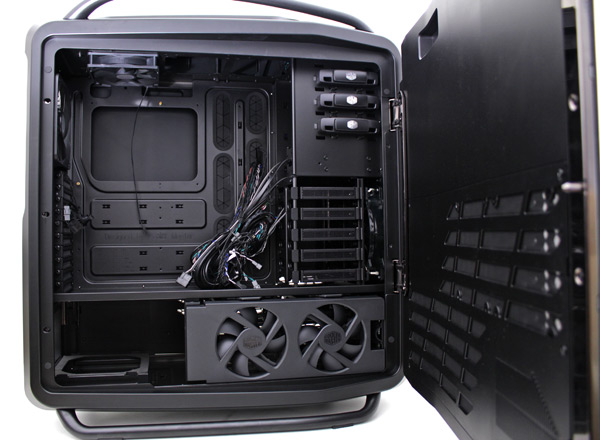
The PSU goes in a separate chamber, which is also shared by additional HDD cage. Cosmos II will take a total of thirteen 3.5’’, where six goes in the bottom chamber. Drivers are cooled by two 120mm fans (1200rpm, 17dBA).
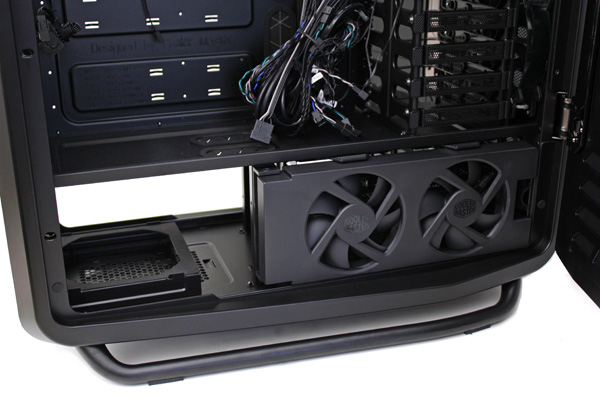
The air passes over the drives and goes out via the back side, through exhausts on right side panels. There are no metal walls that split the bottom chamber and the side panel, which makes routing cables from the PSU to the bottom HDD cage easy.
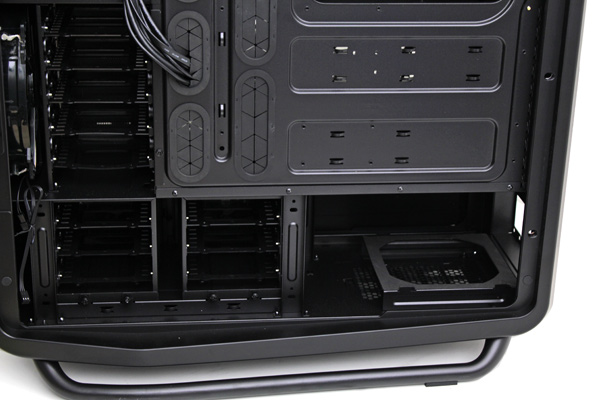
Drive brackets are the same in all cages, i.e. they take 3.5’’ or 2.5’’ drives.
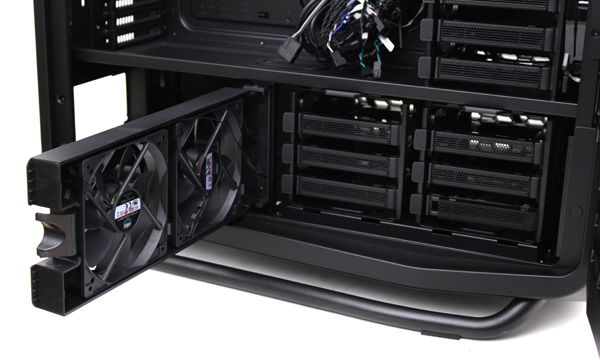
The brackets are made of plastic but the metal mesh grill makes them look much cooler. However, we recently tested Trooper, the case that implemented brackets a bit better. Namely, the grommets on Trooper’s brackets cannot fall out, which is not the case with Cosmos II.
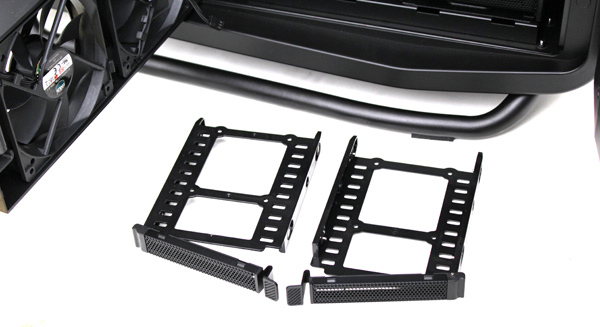
Two fans sit in plastic door which can be removed easily – a simple lift on the front will release them from the brackets. The fans aren’t fixed very tightly in the door, so optional grommets will come in really handy.
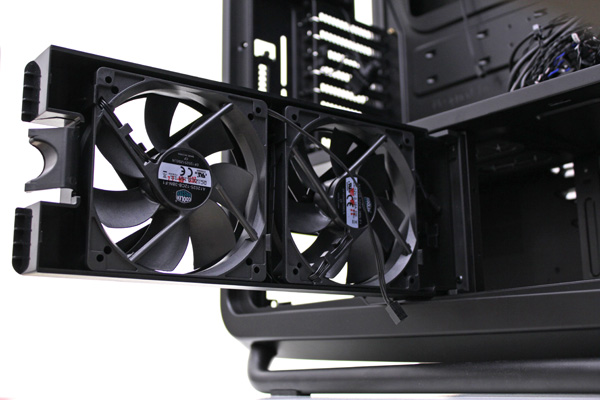
The bottom chamber holds two HDD cages, that can be removed by unscrewing four screws on the back. Two metal add-ons will let you mount a radiator with two fans in the place of bottom HDD cages. However, you can mount a radiator on the top and rear panels as well, so Cosmos II has you well covered there.
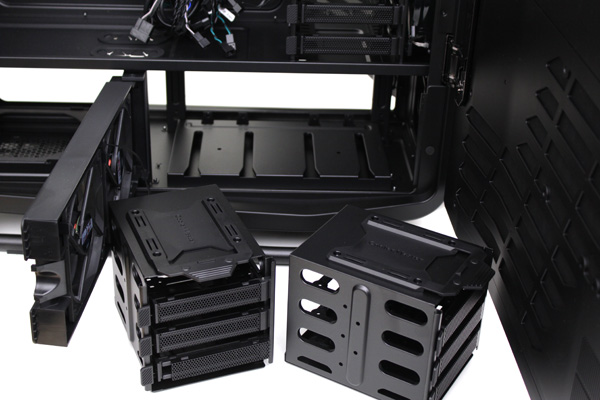
Optical drives are held in place by toolless mechanisms. Below the three 5.25’’ bays are X-Docking hot-swap units. X-Docking is powered via 4-pin molex cable, i.e. you’ll need two connectors on each cable because each X-Docking requires own power. We instantly remembered Obsidian 800D case, which has four hot-swap bays, where all four are powered via a single SATA.
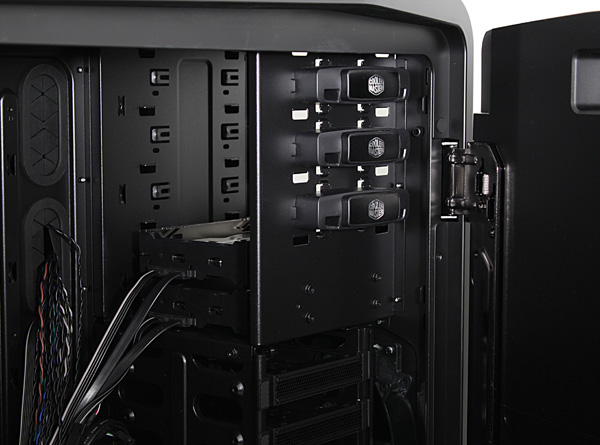
There are enough cable management holes, which are also wide enough. Each hole has protective rubber rings held in place by metal clips. However, Cooler Master used some kind of flexible rubber that falls out occasionally when cables are pulled over it. We think that the rubber would’ve fit better if there were clips on both sides of the motherboard tray. For instance, Obsidian 800D uses much thicker rubber that doesn’t even need clips to stay in place. Cosmos II also has holes just below the top panel, which will come in handy with CPU power cables.
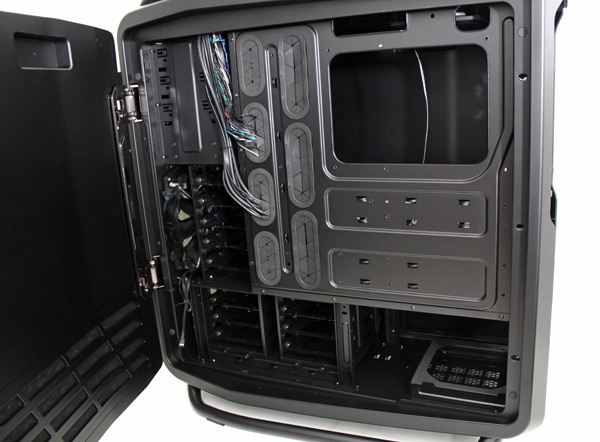
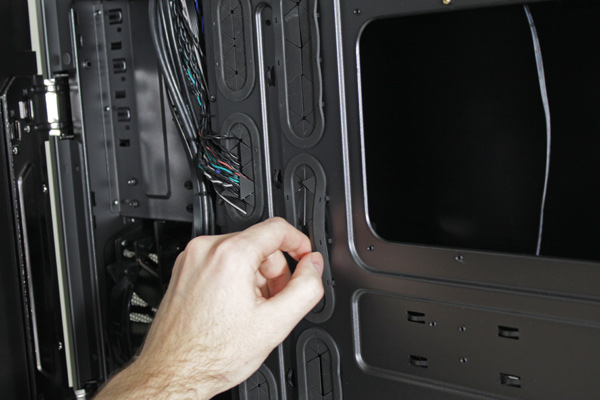
Cosmos II easily housed EVGA X58 4-way SLI (XL-ATX) motherboard, HD 6970 graphics, and Thermalright’s HR-02 CPU cooler. Cosmos II allows for maximum graphics card length of 385mm and CPU coolers at 190mm.
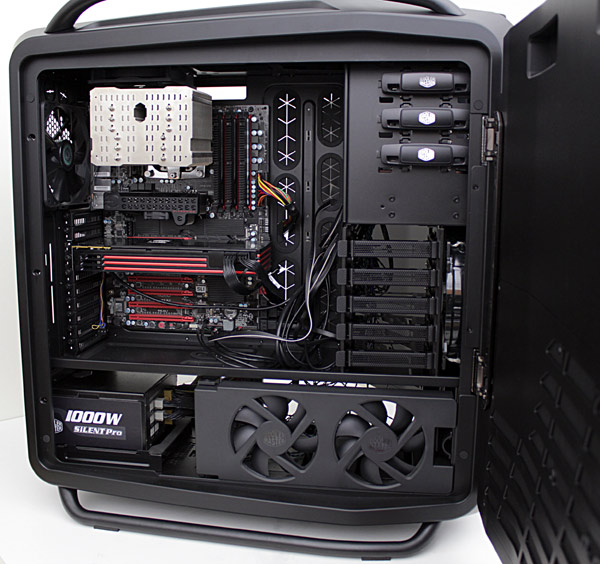
Cosmos II comes with 5 fans, which should be enough for most users. Naturally, the case offers much more than that and advanced users will know how to put it to good use.
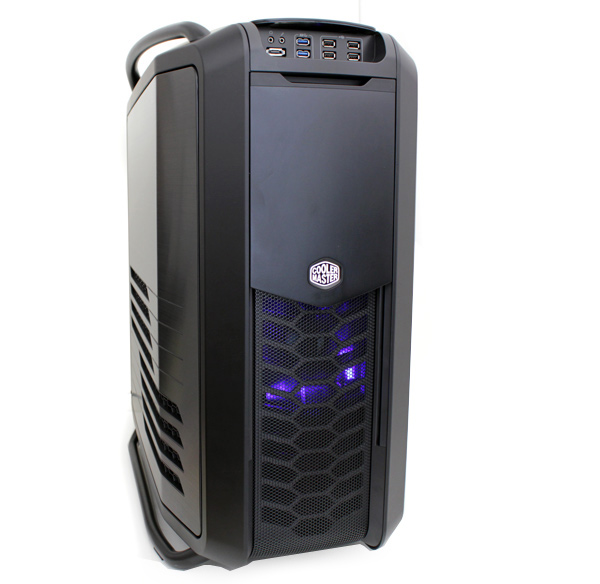
When the fans are at full rpm, Cosmos II ends up being quite loud but also very cool. The noise is considerably dampened once you close the side panels. The included fan controller offers three operation modes, where the fan controller’s lights will show which mode is currently running.
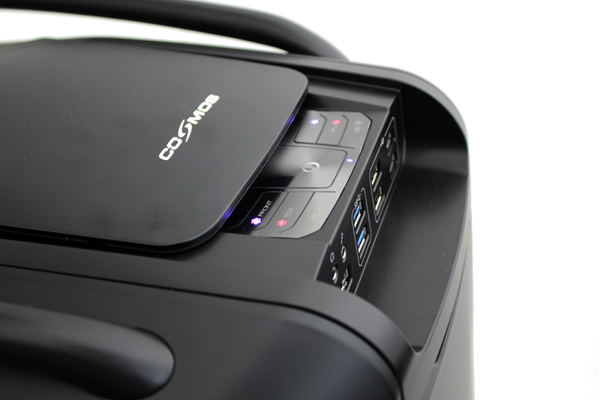
Cosmos II can easily hold Quad SLI or CrossFireX setups. You can mount additional fans in the case (up to 10 fans), for instance, whereas the fan controller will take a total of nine fans.



